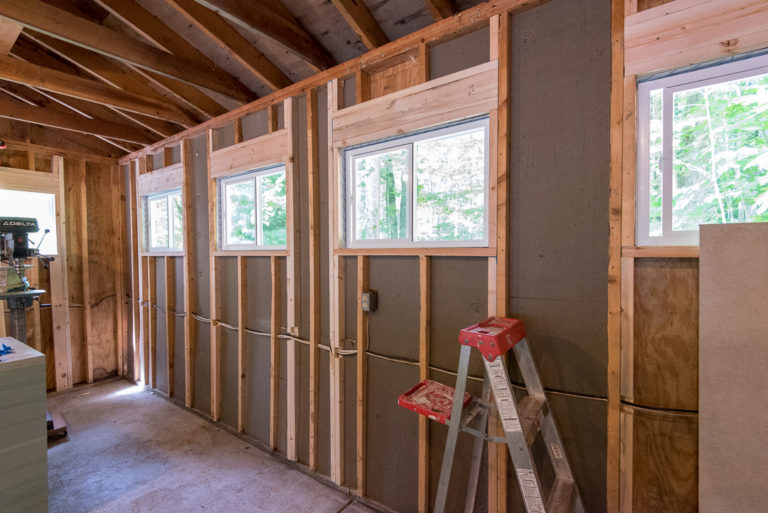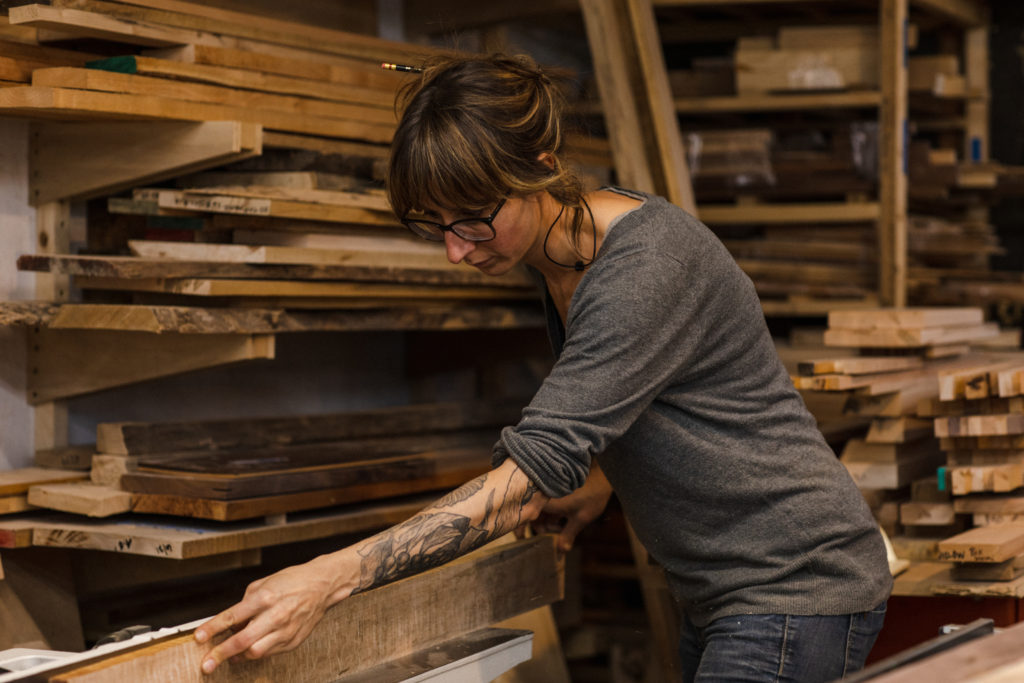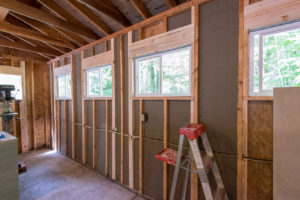I’ve been a bit behind on our progress posts. There was a much needed weeklong staycation and LIFE is happening concurrent with the build. It would have been ideal to build out the shop while it was empty but timing does not always work out to your favor. With orders and jobs piling up on the calendar, the machines in the shop are set up to function, but every task demands a series of moving items around and frantically searching through boxes for that one thing I need to complete it. One thing I say say for sure, our dogs are beyond happy to play in the surrounding woods all day long while I curse and struggle in the shop, especially Abby, who has become quite the obsessed chipmunk/mouse/toad hunter.

Inside the shop, the main task over the last month has been the walls. I need the shop to retain heat over the cold winter months so insulation is a necessity. I entertained the idea for spray foam insulation but quotes were outrageous and well beyond the means of my dwindling budget, I’m talking over $3500.
Instead, I went with rigid foam panels that I scored from a reused building material supply warehouse. There are a few different types of these panels on the market, and they vary in thickness and cost, which influences their R-value.
(R-value: measure of resistance to heat flow through a given thickness of material)
Over Labor Day weekend the warehouse was having a sale on 1.5in thick 4ft x 8ft sheets, which I scored for $7 a sheet, less than half the price they would be brand new. Being used, the panels are a bit battered-broken corners and dents-but I am cutting them all up anyway so the cost savings is perfect for my needs.
My good friend Angelo, the super talented metal worker behind Nickel City Metalworks, lent my his truck to pick up the load. I never told him what I needed his truck for. When I sent him the photo above he freaked out as he thought I had wood on the truck, not super light panels. I have been known to overload a few vehicles with wood in my day.

There’s two ways of cutting the panels, which you need to fit between the studs of your walls. One is with a straight edge and a knife. I did this before in my last shop and though it is less messy, it is way more time consuming than option two. Option two-run it through a table saw.

The challenge of running it through a table saw is that their is fiberglass in the rigid foam panels, so it can be painfully hazardous if you don’t take proper precautions. When I was in my 20s, I worked on a carpentry crew and my boss had me running foam panels through a table saw on a hot July day; I was wearing shorts and a t-shirt. Thankfully I was wearing a dust mask, but I was never warned that the dust contained fine particles of fiberglass which embedded into my sweat and skin. I was in agony for two weeks, but I learned an important lesson that day.
This time, I wore long sleeves, gloves, and a mask. I also connected a dust collector, and the dogs were contained inside. The task went quite smoothly and the panels cut like butter on the saw.
To seal the panels in place, I used Great Stuff spray foam, which creates an airtight seal. I debated on what material to use to seal the walls, as I want to paint them white and hang cabinets and shelves, so I went with plywood sheathing that I picked up for $14 a sheet.
There’s still so much more to go, but when I look back to where the wall started, I’m feeling quite hopeful.


















